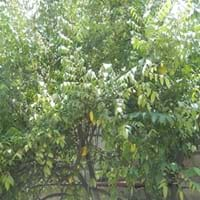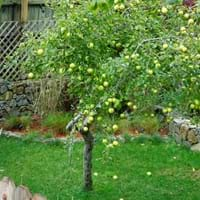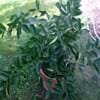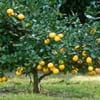Life Span
Perennial
Perennial
Type
Fruit
Flowering Plants, Fruits, Trees
Origin
Southeastern Asia
Eastern Europe, Southern Europe, Russia/Siberia, Southern Asia, Western Asia
Types
Not Available
Not avaialable
Number of Varieties
Not Available
Habitat
Subtropical climates, Tropical regions
Hillside
USDA Hardiness Zone
10-14
5-8
Sunset Zone
H1, H2, 22, 23, 24
1b, 2a, 2b, 3a, 3b, 6, 7, 8, 9, 10, 11, 14, 15, 16, 17, 18, 19, 20, 21, 22, 23, 24
Habit
Arching/Fountain-shaped
Oval or Rounded
Flower Color
Pink, Rose, Violet
White
Flower Color Modifier
Bicolor
Bicolor
Fruit Color
Yellow, Orange, Light Yellow, Lemon yellow, Yellow green, Gold
Gold
Leaf Color in Spring
Green
Green
Leaf Color in Summer
Green
Green
Leaf Color in Fall
Green
Green
Leaf Color in Winter
Light Green
Light Green
Leaf Shape
Oblovate
Oblong
Plant Season
Spring, Summer, Fall
Spring, Fall
Sunlight
Full Sun, Partial Sun
Full Sun, Partial Sun, Partial shade
Type of Soil
Loam, Sand
Clay, Loam
The pH of Soil
Acidic, Neutral
Acidic, Neutral
Soil Drainage
Average
Well drained
Bloom Time
Early Spring, Spring, Late Spring, Early Summer, Summer, Late Summer
Early Spring, Spring
Where to Plant?
Ground
Ground
How to Plant?
Seedlings, Stem Planting
Grafting, Seedlings, Transplanting
Plant Maintenance
Low
Medium
Watering Requirements
Average Water Needs, Requires watering in the growing season
Medium
In Summer
Lots of watering
Lots of watering
In Spring
Moderate
Moderate
In Winter
Average Water
Average Water
Soil pH
Acidic, Neutral
Acidic, Neutral
Soil Type
Loam, Sand
Clay, Loam
Soil Drainage Capacity
Average
Well drained
Sun Exposure
Full Sun, Partial Sun
Full Sun, Partial Sun, Partial shade
Pruning
Prune in winter, Remove damaged leaves, Remove dead leaves
Remove damaged leaves, Remove dead branches, Remove dead leaves
Fertilizers
Fertilize every year
All-Purpose Liquid Fertilizer
Pests and Diseases
Red blotch
Black rot, Leaf spot, Scab
Plant Tolerance
Drought
Drought
Flower Petal Number
Single
Single
Foliage Texture
Medium
Medium
Foliage Sheen
Glossy
Matte
Attracts
Birds, Butterflies
Birds
Allergy
Kidney Stone
Mouth itching, Throat itching
Aesthetic Uses
Not Used For Aesthetic Purpose
Not Used For Aesthetic Purpose
Beauty Benefits
Not Available
Not Available
Environmental Uses
Air purification, Food for birds, Food for insects, Nesting sites for birds, Prevent Soil Erosion
Air purification
Medicinal Uses
Anti-oxidant, Antioxidants, High blood pressure, Nutrients
Cancer, constipation, Diabetes, Diarrhea, Dysentry, Fever, Heart problems, Tooth ache
Part of Plant Used
Fruits, Seeds
Fruits
Other Uses
Oil is used in perfume, soaps, creams, etc., Used As Food, Used for its medicinal properties
Used As Food, Wood is used for making furniture
Used As Indoor Plant
No
No
Used As Outdoor Plant
Yes
Yes
Garden Design
Edible, Fruit / Fruit Tree, Tropical
Edible, Feature Plant, Fruit / Fruit Tree, Topiary / Bonsai / Espalier
Botanical Name
AVERRHOA carambola
MALUS domestica 'Golden Delicious'
Common Name
Carambola, Starfruit
Apple, Golden Delicious Apple, Yellow Eating Apple
In Hindi
carambola पेड़
Golden Delicious
In German
Sternfrucht Baum
Golden Delicious
In French
arbre carambole
Golden Delicious
In Spanish
árbol de carambola
Golden Delicious
In Greek
carambola δέντρο
Golden Delicious
In Portuguese
árvore de carambola
Golden Delicious
In Polish
karambola drzewo
Jabłoń domowa 'Golden Delicious'
In Latin
carambola ligno
Golden Delicious
Phylum
Tracheophyta
Magnoliophyta
Class
Magnoliopsida
Magnoliopsida
Family
Oxalidaceae
Rosaceae
Clade
Angiosperms, Eudicots, Rosids
Angiosperms, Eudicots, Rosids
Tribe
Not Available
Not Available
Subfamily
Not Available
Not Available
Number of Species
Not Available
Season and Care of Carambola and Golden Delicious
Season and care of Carambola and Golden Delicious is important to know. While considering everything about Carambola and Golden Delicious Care, growing season is an essential factor. Carambola season is Spring, Summer and Fall and Golden Delicious season is Spring, Summer and Fall. The type of soil for Carambola is Loam, Sand and for Golden Delicious is Clay, Loam while the PH of soil for Carambola is Acidic, Neutral and for Golden Delicious is Acidic, Neutral.
Carambola and Golden Delicious Physical Information
Carambola and Golden Delicious physical information is very important for comparison. Carambola height is 610.00 cm and width 610.00 cm whereas Golden Delicious height is 460.00 cm and width 460.00 cm. The color specification of Carambola and Golden Delicious are as follows:
Carambola flower color: Pink, Rose and Violet
Carambola leaf color: Green
Golden Delicious flower color: White
- Golden Delicious leaf color: Green
Care of Carambola and Golden Delicious
Care of Carambola and Golden Delicious include pruning, fertilizers, watering etc. Carambola pruning is done Prune in winter, Remove damaged leaves and Remove dead leaves and Golden Delicious pruning is done Remove damaged leaves, Remove dead branches and Remove dead leaves. In summer Carambola needs Lots of watering and in winter, it needs Average Water. Whereas, in summer Golden Delicious needs Lots of watering and in winter, it needs Average Water.





